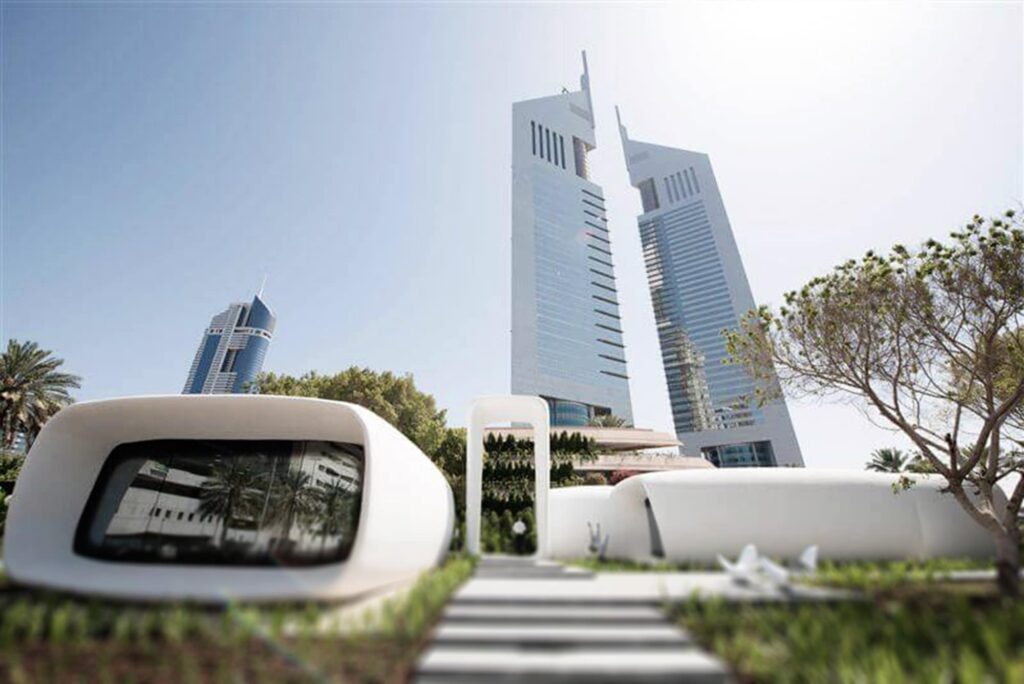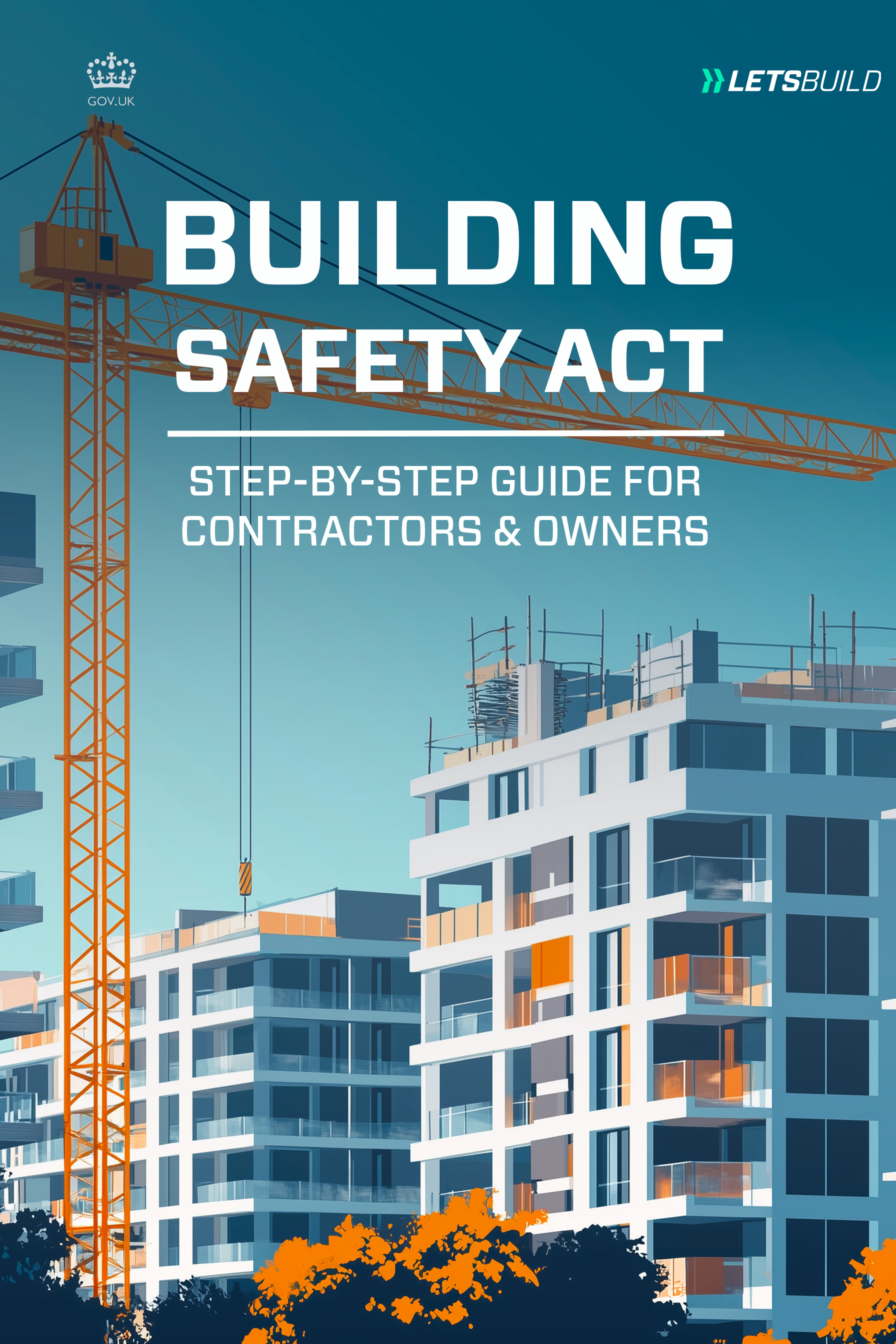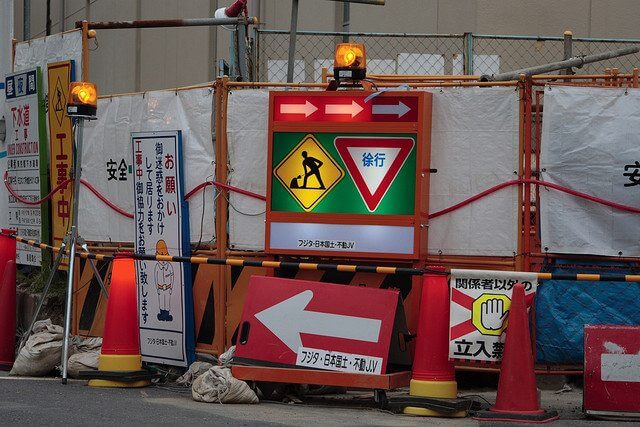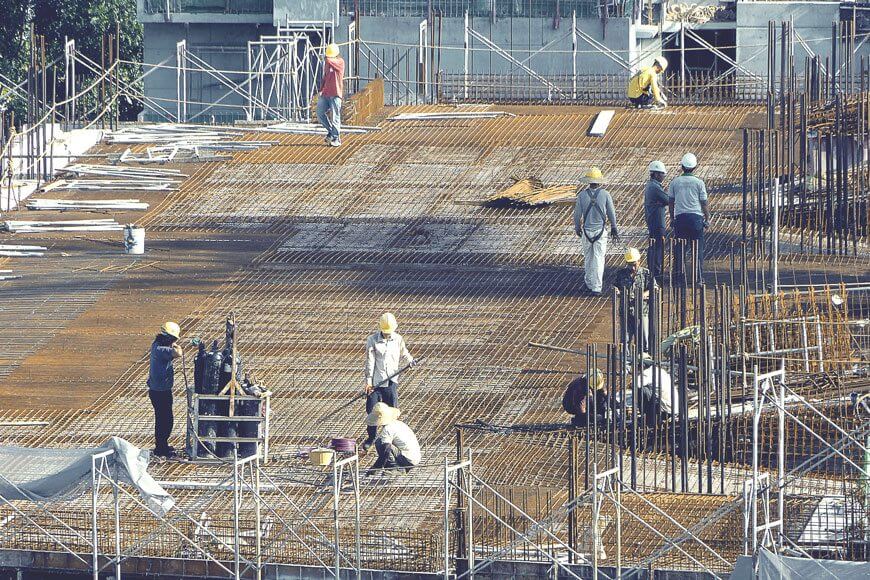3D-printed buildings have been popping up more frequently over the last few years, but are they a gimmick, or could they be the future of sustainable construction?
As the industry focuses on green construction to alleviate the environmental stresses caused by construction—the sector uses 48% of global energy, depletes natural resources, and is responsible for 38% of global greenhouse gas emissions—construction professionals worldwide are searching for ways to make their efforts more sustainable.
As a result, some companies are turning to 3D printing as a possible solution to the current construction methods to mitigate environmental impacts, reduce energy consumption, increase efficiency, and realise cost savings.
Let’s discuss the benefits and challenges of 3D-printed buildings and whether or not they’re the answer to the problem of sustainable construction.
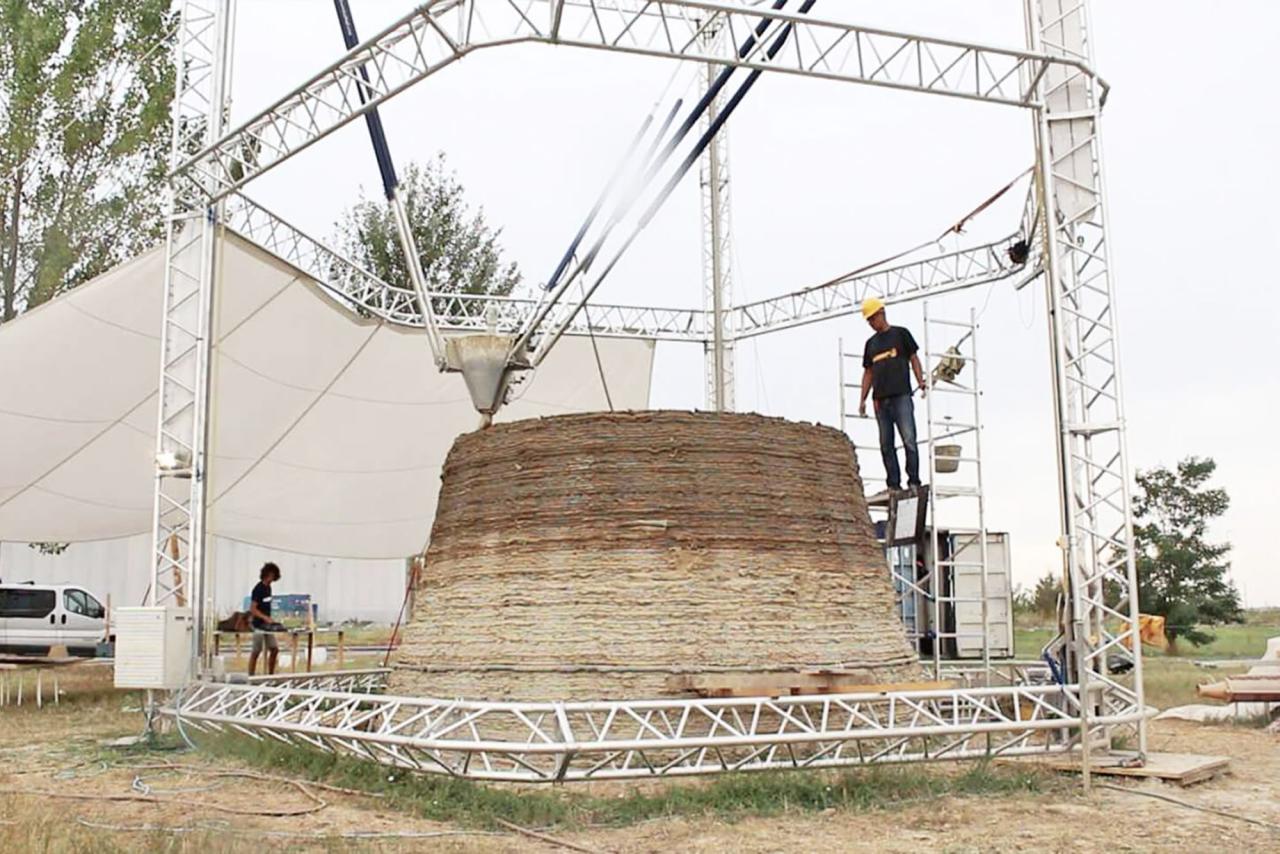
The benefits of 3D-printed buildings in sustainable construction
Compared to traditional buildings, 3D-printed buildings come with some significant advantages.
- They’re efficient. In fact, Habitat for Humanity and Alquist 3D recently constructed a 3D-printed house in 28 hours, which is typically a four-week project for the organization. It wasn’t a small home either—the 3D-printed building was 1,200 sq. ft. with three bedrooms and two bathrooms.
- They’re affordable. With optimizations to save materials, 3D-printed buildings reduce cement demand, decrease energy consumption, and improve efficiency. With the 3D-printed building mentioned above, Habitat for Humanity reduced its overall building costs by 15% per square foot.
- They’re green. Companies can collect printing materials from local sources and recycle any industrial and construction waste. With a smaller carbon footprint and less environmental impact, 3D-printed buildings can help greatly reduce waste in the industry. This chart is a great demonstration of how 3D-printed buildings can lead to more sustainable construction practices.
- They’re safe. 3D-printed concrete buildings are more durable than most traditionally constructed buildings, have a lower weight, and offer better resistance to earthquakes, extreme temperatures, floods, fires, and high-speed winds. Not to mention they adhere to the same building codes, laws, and regulations as any other structure.
Free eBook: Quick guide to Lean practices for construction professionals
The challenges of 3D-printed buildings in sustainable construction
Even with the benefits 3D-printed buildings can bring to sustainable construction, there are still some challenges to address.
- A new design system: 3D-printed buildings require rebuilding the existing architectural design systems we currently use. While we traditionally design buildings to meet the requirements for the current construction processes and functions, the design for 3D-printed buildings is much different. 3D-printed buildings are constructed with special concrete, leaving those in the industry to consider the features of those materials during the design process. So, if 3D-printed buildings are to become the future of sustainable construction, we need to rethink our existing architectural design systems and construction standards.
- A more complex and involved process: Creating 3D-printed buildings requires various industries (engineering, manufacturing, infrastructure, construction, etc.) to work together, and the process is more akin to producing a product in a manufacturing sense rather than traditional construction. This results in 3D-printed buildings requiring near-perfect precision and automation, which presents challenges to the manufacturing industry—particularly those of large machine tools.
- High requirements for materials: 3D-printed buildings have high requirements regarding construction materials. The high speed that we can print at, which is one of the biggest advantages of 3D-printed buildings, means that we have to use materials that can solidify extremely quickly. The traditional construction materials we currently use can’t meet this need, and the industry still requires more R&D in this area if we are ever to create these buildings on a large scale.
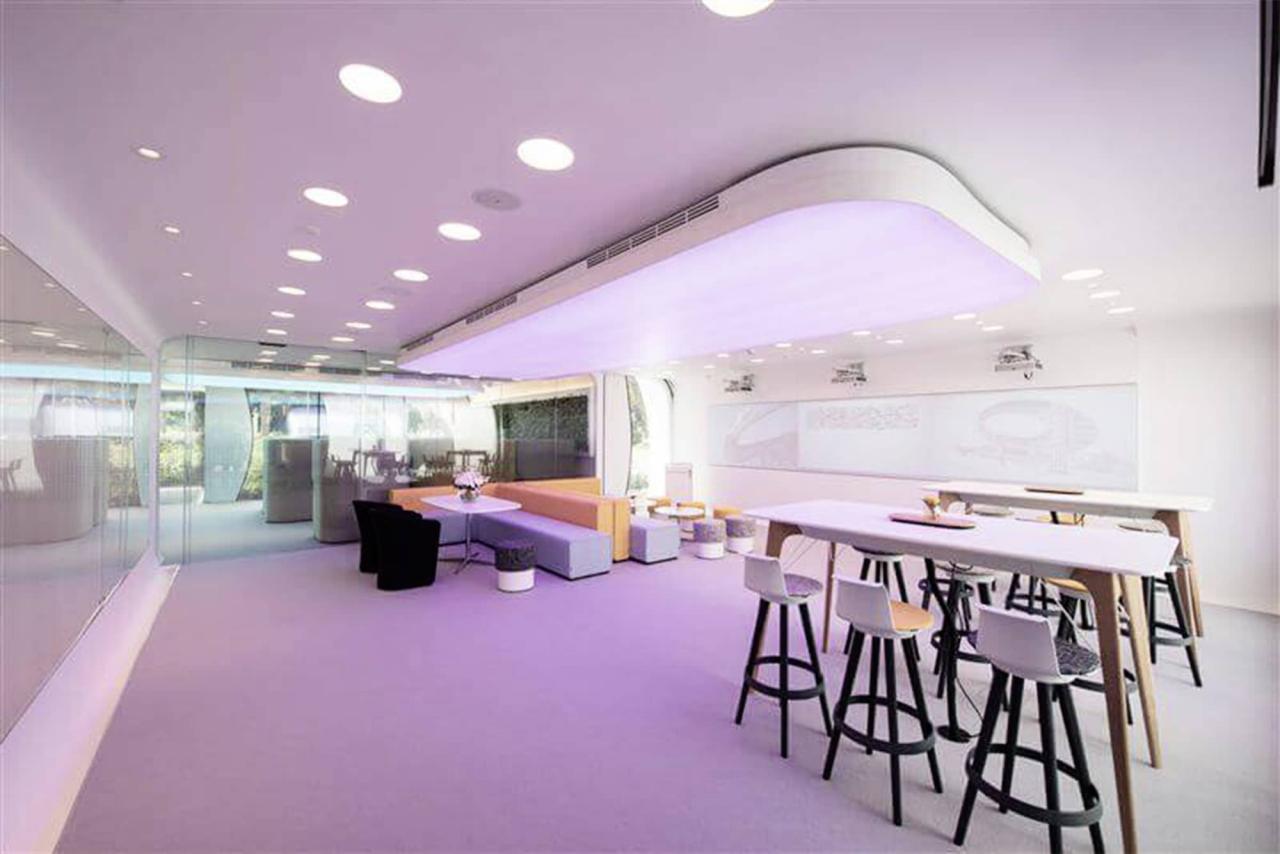
Read more: Why are green buildings important?
A look at Dubai’s 3D-printed building: The “Office of the Future”
The “Office of the Future,” designed to be the headquarters of the Dubai Futures Foundation, was one of the earlier showcases of what we can do with 3D-printed buildings. It’s a fully functional building equipped with telecommunications capabilities, water, electricity, and AC systems.
- The 3D-printed building spans 2,700 sq. ft. with office spaces for 16 people.
- It was printed in 17 days and installed in two.
- The project cost was $140,000.
The entire crew for the project consisted of 18 people—Dubai officials stated that the project saw 50% reduced labour costs compared to a traditional project of the same scale.
In addition, WinSun, a leader in 3D-printed buildings, believes that 3D printing in construction can reduce labour costs by up to 80% and construction waste by up to 60%.
The future of sustainable construction: Are 3D-printed buildings the answer?
We believe that 3D-printed buildings have a bright future in an industry trending toward sustainable construction. However, technology still has a long way to go.
Will we see large commercial 3D-printed buildings in the next few years? Probably not, but creating affordable, durable housing with 3D printing in the near future is a realistic possibility—it’s already being done, albeit on a small scale.
As the logistical barriers fall into place and companies begin tackling some of the challenges associated with 3D printing, we expect 3D-printed buildings to become more mainstream in the future and lead the way to sustainable construction by reducing the industry’s carbon footprint and utilizing more sustainable, recyclable materials.
Learn more about making your efforts more sustainable, eliminating on-site waste, and increasing productivity with our free guide to lean practices for construction professionals.
